The walled garden at Glenarm Castle, full of surprising, exhilarating and fiery colours
Glenarm Castle's walled garden is a testament to the endless nurturing enthusiasm and creativity of those who care for it, says Non Morris.
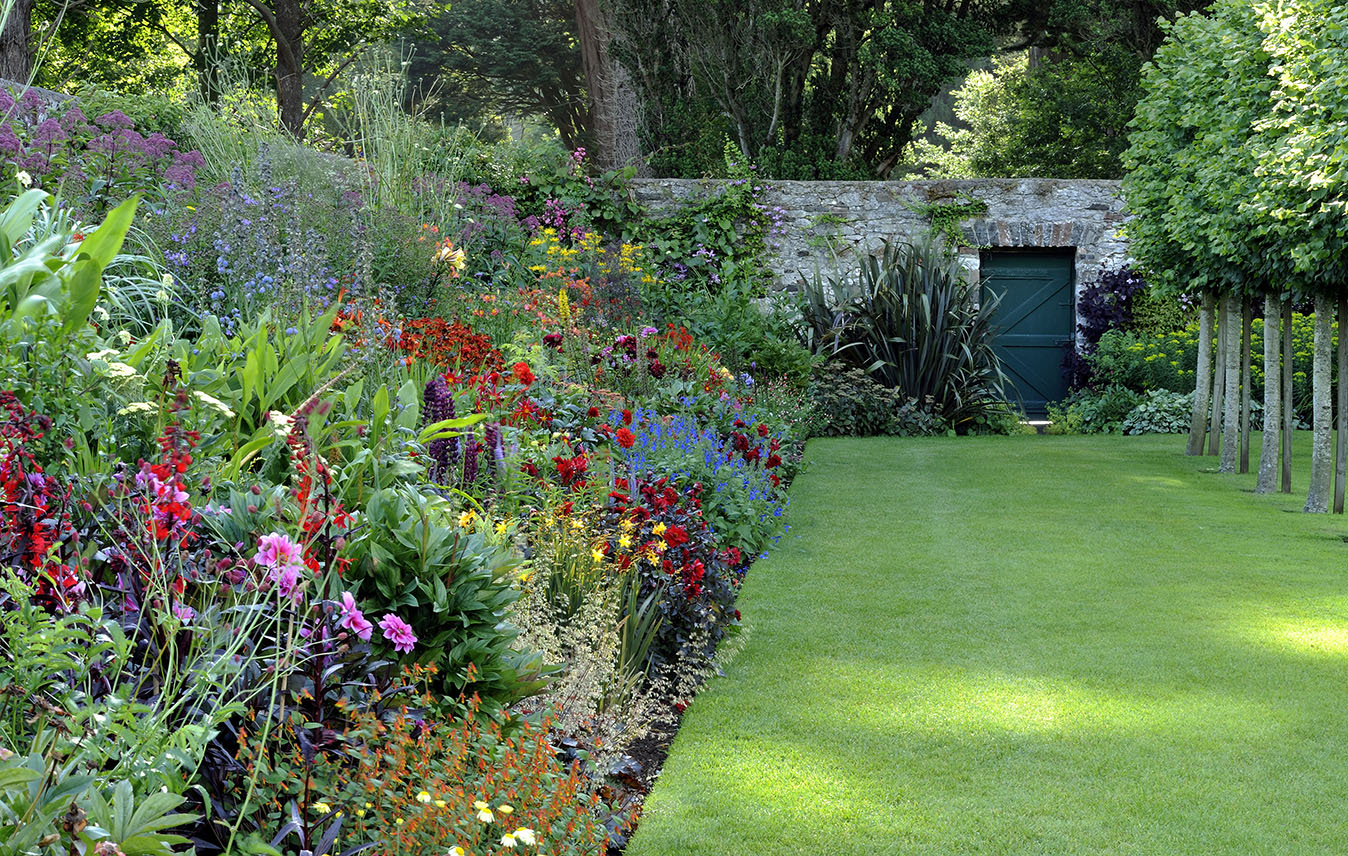

The Walled Garden at Glenarm Castle is fashionably situated – fashionable for the first part of the 19th century at least – a few minutes’ walk away from the imposing four-towered mass of the house itself. The castle is home of Randal and Aurora McDonnell, Viscount and Viscountess Dunluce. Randal’s favourite approach to the garden is via the shady avenue of shaggy Monterey cypress.
The avenue was once so shady and tunnel-like that, when the army was stationed at the castle during the Second World War, tanks parked along its length were completely hidden from view. You enter the garden through the simple green painted Bell Gate, almost hidden among the drapes of clematis that are trained over the high stone walls.
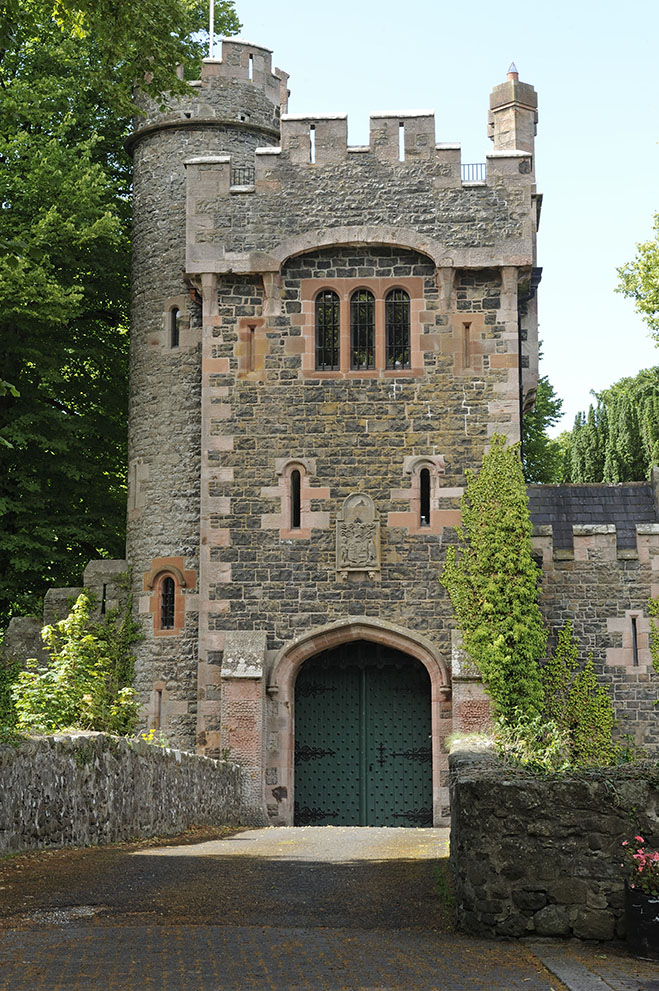
The explosion of fiery colour that greets you – an elongated, perfectly graded cash register of fiery reds, yellows and blues – is as surprising as it is exhilarating. The use of colour and form here in the Hot Border is exemplary. There are crimson dahlias (including Aurora’s favourite star-shaped Dahlia Marie Schnugg), their reds made more intense by the electric blue of Salvia patens.
The delicate arching form of the clear lemon yellow Crocosmia Citronella is echoed at the back of the border by Inula magnifica, its deeper shade of yellow soft enough to sit comfortably next to towering stands of bruised-mauve Eupatorium purpureum.
Perking things up throughout, in that quirky secret-ingredient way achieved by only the most magical borders, are pockets of Potentilla nepalensis Roxana, with its ringed salmon-coloured flowers and the pink-flushed bells of Penstemon digitalis Husker Red, whose burgundy stems and pale flowers add subtlety and depth to its sizzling neighbours.
"This is clearly a wonderful place for growing things"
It was the formidable Anne Catherine McDonnell – Countess of Antrim in her own right – who decided against a kitchen garden closer to both the house and nearby Irish Sea and built the current four-acre Walled Garden in the 1820s using limestone quarried from the demesne.
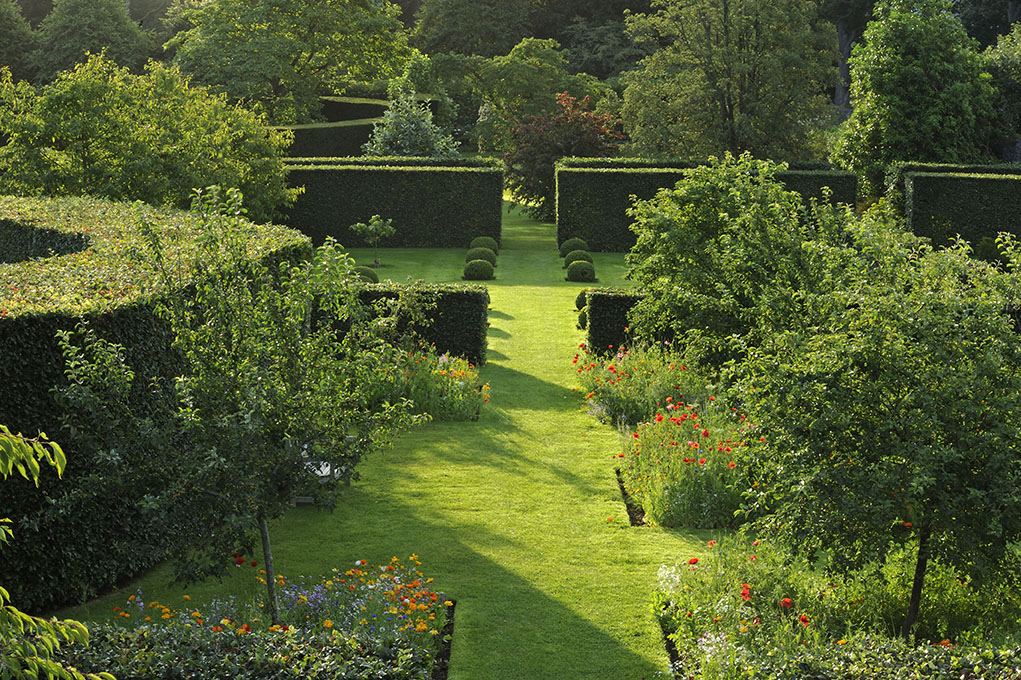
The Countess also undertook a Romantic transformation of the house, including the addition of a castellated Barbican Gate. She planted a monumental circular yew hedge in the lower part of the garden and installed an enormous five-bay glasshouse. Twenty gardeners produced tender and out-of-season fruit and vegetables for the household, with further special houses for figs, pineapples and mushrooms.
Sign up for the Country Life Newsletter
Exquisite houses, the beauty of Nature, and how to get the most from your life, straight to your inbox.
By the close of the century, priorities had changed and the Walled Garden had become increasingly ornamental. There are watercolours of colourful herbaceous borders painted by Louisa, Countess of Antrim in 1900 and scrapbook photographs show eminent plantswoman Ellen Willmott visiting Glenarm to advise on roses.
"It hasn’t quite stopped raining all day, but it’s warm and there’s a constant feeling of gentle light breaking through"
The 20th century was a challenging time for walled gardens everywhere. The only further lasting contribution to Glenarm’s Walled Garden was made in the 1950s by the 13th Earl of Antrim, who planted a Beech Circle in the upper part of the garden to echo the 100-year-old Yew Circle and added a splendid pair of serpentine beech hedges.
Randal was given the key to the Barbican Gate in 1992, when he was only 25. ‘By the time I took on the Walled Garden, it was completely derelict bar the yew circle, the beech circle and a few shrubs,’ he explains, ‘but I didn’t hesitate. I had always loved this place. It had sagged rather, but it was very exciting to be able to stop it sag for a bit.’
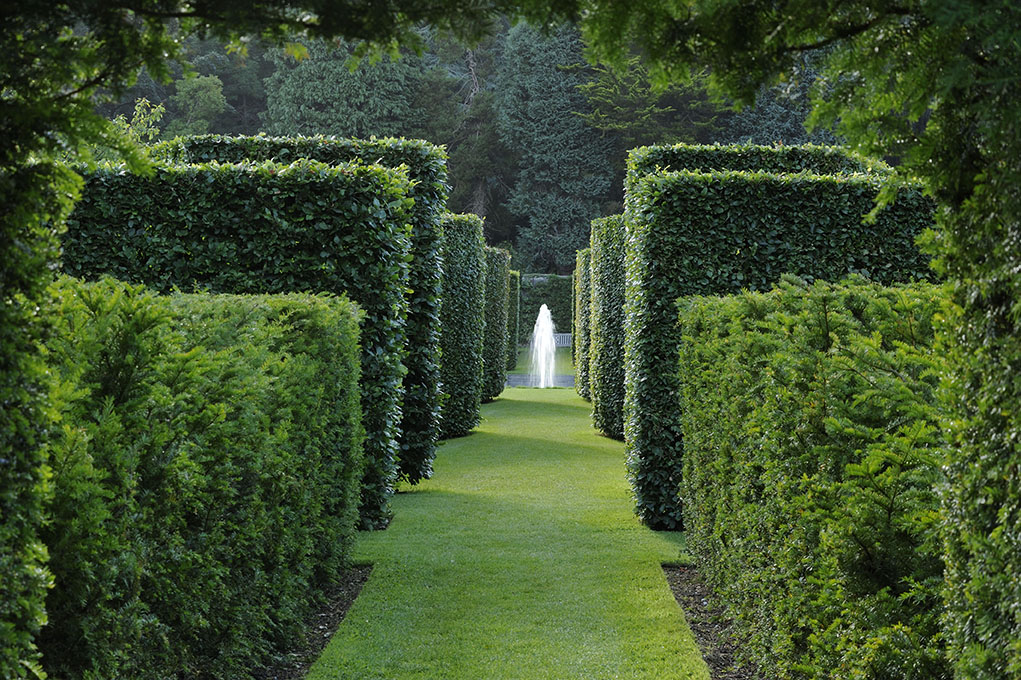
Harnessing the ‘energy and the optimism of youth’, and encouraged by an enthusiastic estate manager of similar age, Randal, with 600 years of family history nipping at his heels, set about restoring the dispiriting four acres and turning it into a beautifully ordered, atmospheric and uplifting space.
He relished the challenge of setting out the ‘bones’ of the garden, immediately and intuitively planting further hedges of beech and yew to guide the eye and form velvety backdrops, installing an avenue of Irish yew at the top of the garden for a calm place to walk and sit and clothing the west-facing wall behind it with bright red Discovery apples that now grow in ridiculously perfect triangles like giant sampler shapes.
"A stone rill runs surefootedly between a pair of hedges to a rectangular pool... the morning light on the gently moving water is magical"
The collapsing 100-yard-long glasshouse – every pane of which was agonisingly rhomboid rather than rectangular – was restored and the few remaining specimen trees, including a spectacular cinnamon-barked Chilean myrtle, were nurtured back to good health.
Aurora knew little about gardening when she arrived at Glenarm, but has been a hungry learner and has become a sensitive and supportive driving force in the team. Things really started motoring when the McDonnells asked Nigel Marshall, newly retired head gardener of Mount Stewart, to help them develop the garden, especially the borders. ‘Nigel was a turning point,’ explains Aurora. ‘He was inspirational.’
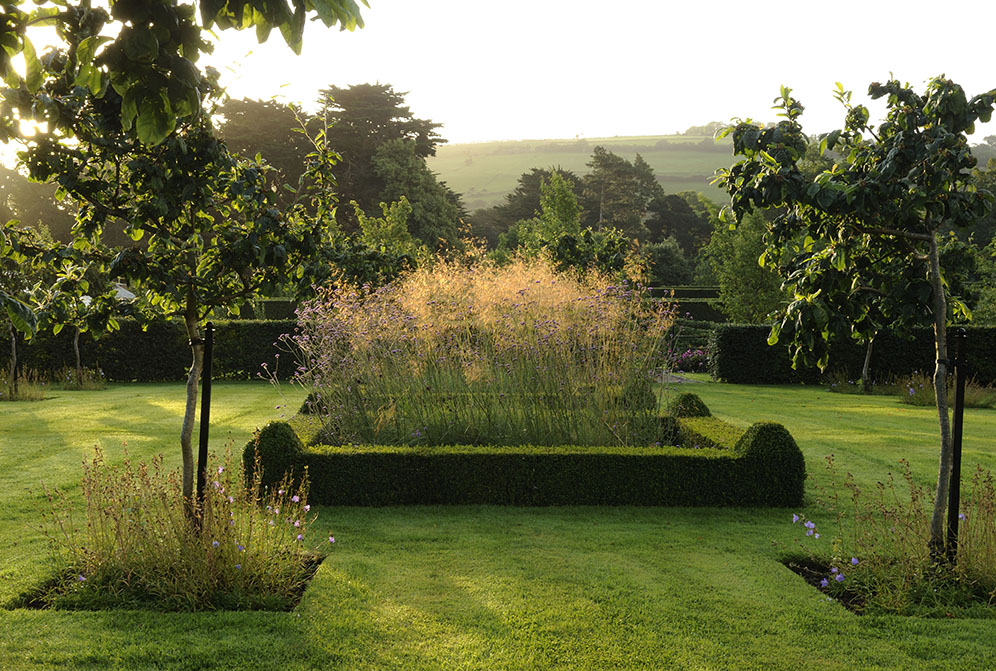
A series of stilted lime hedges – Tilia platyphyllos Rubra – was planted, which now offer immaculately framed views of the Hot Border and the handsome white glasshouse further up the garden, with its simple anchoring border of catmint.
As you turn the corner at the top of the Hot Border, you realise that the lime hedge keeps the cool silvery Double Borders as a wonderful surprise. The planting in the Double Borders is exquisite: pale rockets of pastel-coloured foxgloves, delicately arching angels’ fishing rods and airy towers of white Lysimachia ephermerum set against the inky green of the yew circle.
An arch in the yew offers tantalising glimpses of the Herb Garden. Here, framed by bay trees underplanted with wild strawberry, the bright-yellow buttons of Tanacetum vulgare clash happily with the dustier yellow of the headily scented curry plant. To one side, an elegant, particularly slow-growing magnolia, Magnolia denudata, quietly enjoys its spreading maturity.
The Walled Garden at Glenarm opened to an enthusiastic public in 2005 and has continued to evolve – thoughtfully and with imagination. A stone rill commissioned from architect Jill Lambert runs surefootedly between a pair of hedges to a rectangular pool at the centre of the Beech Circle. It is the gentle detail of lining the rill with egg-shaped pebbles brought up from the beach that makes the difference and, as head gardener James Wharry observes, the morning light on the gently moving water is magical.
Feeling that the upper part of the garden still lacked cohesion, the McDonnells turned to friend and landscape designer Catherine Fitzgerald, who came up with a deeply satisfying design for six ornamental gardens in separate rooms, five to pay homage to the original productive function of a walled garden and a Mount to take the sixth space.
There is now a garden of crab apples underplanted with tulips followed by cottage-garden annuals, a Pear Garden, a young Cherry Garden with a restrained structural pattern of box balls, and perhaps the two most successful gardens: an Apple Orchard, with mown paths through long grass laced with fritillaries, ragged robin and camassia, and the Medlar Garden, with 24 naturally kinky-trunked medlars and box-edged parterres filled with airy, light-catching combinations such as Stipa gigantea and Verbena bonariensis.
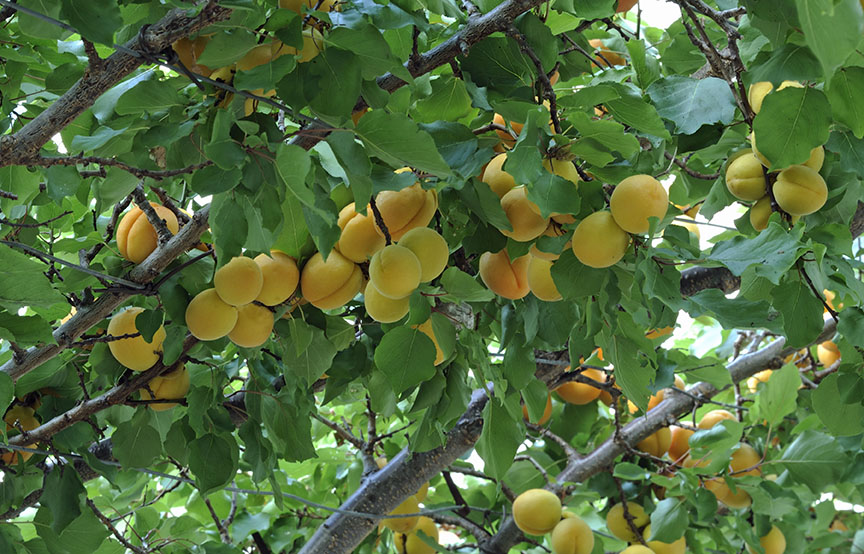
The Mount is a triumph. Halfway up, your eye is filled with kaleidoscopic colour from all corners of the garden and, at the top, it’s an added pleasure to see how deftly the elements of the garden fit together, to glimpse the house through a screen of fine trees and to understand the jewel-box quality of the garden in the context of the wilder countryside beyond.
I try to take it all in – the new Hydrangea Border planted by current garden advisor Reg Maxwell (former curator of the Belfast Botanic Gardens) and the East Border, in which a limestone sculpture of Madonna and Child carved by Randal’s grandmother, Angela Sykes, when she was 16, nestles among tall grasses and voluptuous tree peonies.
As we turn to leave, Randal points out a towering palm tree emerging from a bank of mature woodland behind the garden ‘grown from the stone of a Christmas date planted by my aunt before the Second World War’. It hasn’t quite stopped raining all day, but it’s warm and there’s a constant feeling of gentle light breaking through. This is clearly a wonderful place for growing things and the Walled Garden at Glenarm is a testament to the endless nurturing enthusiasm and creativity of those who care for it.
The Walled Garden at Glenarm Castle, Glenarm, Ballymena, Northern Ireland (028–2884 1203; www.glenarmcastle.com)

Country Life is unlike any other magazine: the only glossy weekly on the newsstand and the only magazine that has been guest-edited by HRH The King not once, but twice. It is a celebration of modern rural life and all its diverse joys and pleasures — that was first published in Queen Victoria's Diamond Jubilee year. Our eclectic mixture of witty and informative content — from the most up-to-date property news and commentary and a coveted glimpse inside some of the UK's best houses and gardens, to gardening, the arts and interior design, written by experts in their field — still cannot be found in print or online, anywhere else.
-
 Some of the finest landscapes in the North of England with a 12-bedroom home attached
Some of the finest landscapes in the North of England with a 12-bedroom home attachedUpper House in Derbyshire shows why the Kinder landscape was worth fighting for.
By James Fisher
-
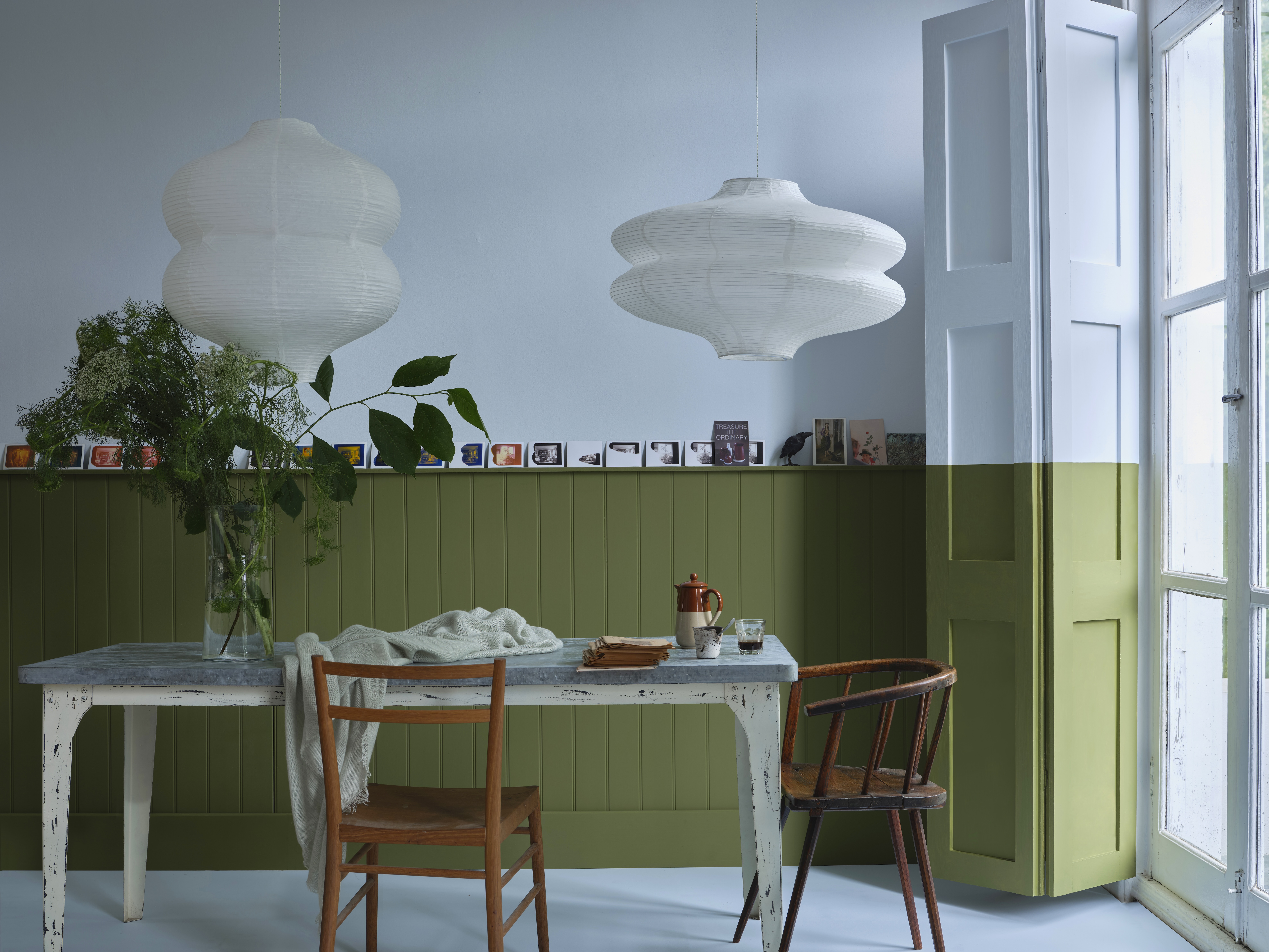 John Sutcliffe — The man, the myth and the paint-naming legend behind Dead Salmon and Elephant's Breath
John Sutcliffe — The man, the myth and the paint-naming legend behind Dead Salmon and Elephant's BreathBy Carla Passino